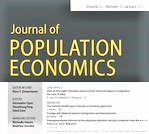A new paper published in the Journal of Population Economics finds substantial heterogeneity in the effects of extreme temperature exposure on birth outcomes. In particular, prenatal exposure to heat waves has stronger negative effects than exposure to cold spells on surviving births.
Read more in:
The effects of prenatal exposure to temperature extremes on birth outcomes: the case of China
Xi Chen, Chih Ming Tan, Xiaobo Zhang & Xin Zhang
Journal of Population Economics (2020) 33, Issue 4: 1263-1302
FREE READLINK
GLO Fellow Xi Chen

Author Abstract: This paper investigates the effects of prenatal exposure to extreme temperatures on birth outcomes—specifically, the log of birth weight and an indicator for low birth weight—using a nationally representative dataset on rural China. During the time period we examine (1991–2000), indoor air conditioning was not widely available and migration was limited, allowing us to address identification issues endemic in the climate change literature related to adaptation and location sorting. We find substantial heterogeneity in the effects of extreme temperature exposure on birth outcomes. In particular, prenatal exposure to heat waves has stronger negative effects than exposure to cold spells on surviving births.
Access to the newly published complete Volume 33, Issue 4, October 2020.
LEAD ARTICLE OF ISSUE 4:
Yun Qiu, Xi Chen & Wei Shi, Impacts of social and economic factors on the transmission of coronavirus disease 2019 (COVID-19) in China
Journal of Population Economics 33, 1127–1172 (2020). OPEN ACCESS

Ends;

